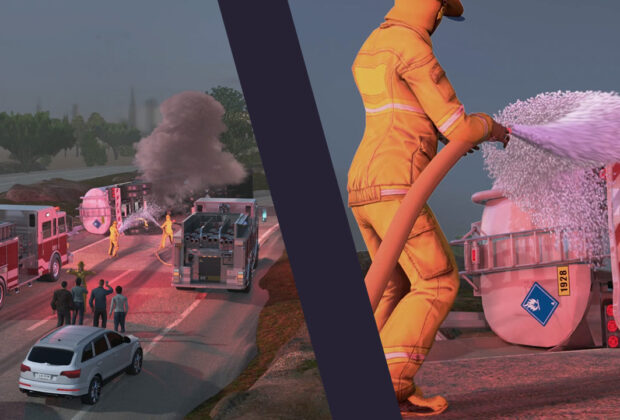Poisonous gasses are a silent, often undetectable threat to Canadian workers in a number of different industries.
Employers and employees who may come into contact with these gasses, such as Hydrogen Sulfide (H2S) gas, must properly understand how to mitigate risk and ensure personal safety while complying with company and government regulations.
H2S Awareness Online Training through Danatec by We Know Training is designed to protect Canadian workers from H2S gas while equipping them with the knowledge to understand the properties of H2S, the health hazards which are associated with exposure, the detection and monitoring methods, and acceptable exposure limits.
What is H2S Gas?
Hydrogen Sulfide (H2S) gas is produced from the breakdown of organic materials in the absence of oxygen and commonly occurs in environments such as swamps and sewers. H2S gas is commonly found during the drilling and production of crude oil and natural gas, as well as in environments such as wastewater treatment and utility facilities.
H2S is most noticeable by its odour, often compared to rotting eggs. The gas is colourless, flammable, poisonous and corrosive. Early detection of H2S gas can be the difference between life and death. Inhalation of H2S gas is extremely dangerous due to its prevention of cellular respiration, similar to that of carbon monoxide.
What are the Health Effects of H2S Gas?
High levels of H2S gas exposure can instantly deaden an individual’s sense of smell – increasing the need for H2S monitoring devices to be used by all employees who may come into contact with the gas.
Continuous exposure to even small concentrations of H2S gas can lead to a loss of sense of smell (olfactory desensitization), increasing the risk of serious harm or death. Even a small concentration of H2S gas can be fatal and should always be closely monitored.
H2S gas irritates the mucous membranes of the body and the respiratory tract, among other things. Following exposure, acute symptoms may include headache, nausea, convulsions, and eye and skin irritation.
At high concentrations, only a few breaths of h2S gas may lead to unconsciousness, coma, respiratory paralysis, seizures, or death.
Inhalation: Can cause death. Can cause life-threatening accumulation of fluid in the lungs (pulmonary edema). Can cause, excitement, headache, dizziness, staggering, sudden collapse (“knockdown”), unconsciousness, and death Long-term damage may result from a severe short-term exposure.
Skin Contact: Direct contact with the liquefied gas can cause frostbite. Symptoms of mild frostbite include numbness, prickling and itching. Symptoms of more severe frostbite include a burning sensation and stiffness.
Eye Contact: The gas irritates the eyes. Direct contact with the liquefied gas can freeze the eye. Permanent eye damage or blindness can result.

How to Detect and Treat for H2S Gas Exposure
Wearable gas sensors are necessary for any worker who may come into contact or work near H2S gas.
Exposure limits to H2S gas vary by jurisdiction, but according to the Canadian Centre for Occupational Health and Safety (CCOHS), are similar to those outlined by the American Conference of Governmental Industrial Hygienists (ACGIH®).
ACGIH® TLV® – TWA: 1 ppm
ACGIH® TLV® – STEL [C]: 5 ppm
Exposure Guideline Comments: TLV® = Threshold Limit Value. TWA = Time-Weighted Average. STEL = Short-term Exposure Limit. C = Ceiling limit.
Those exposed to H2S gas should remove themselves from the environment immediately. Rescuers need to take caution when approaching victims who cannot evacuate independently, as to not be harmed themselves by H2S exposure.
Respiratory protection is recommended when entering an H2S environment, as is a safety line, because of the very rapid toxic effects of the gas. There are no proven antidotes to H2S gas poisoning, but side-effects and symptoms can be treated or managed. In serious cases, hospitalization may be necessary.
Danatec Course Outline
- Hydrogen Sulphide: It’s a Killer Gas
- Hazard detection & exposure limits: How much is too much?
- Hydrogen sulphide in the Oil & Gas industry
- Personal protective measures
- Contingency plans & rescue response including First Aid
- Safe job procedures
This course consists of 6 chapters and a 20-question final exam. A score of 80% on the final exam is required for participants to achieve certification. Once you have passed your exam, you may access a printable completion certificate as well as a digital completion badge.
Ready to protect yourself and your employees?
Start your H2S Awareness Online Training today!




Comments are closed.